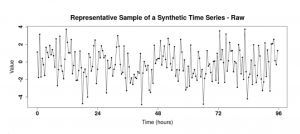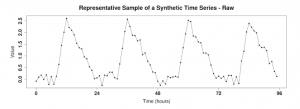You can use the Summary tab to collect the mean results from each of the 5 methods to compare to the true values. To provide a sense of the spread of period estimates for each method, a histogram of errors in the period estimate across the set of samples is given for each method.
All 5 methods provide period estimates, but only the DWT and sine-fit methods also provide amplitude and peak time estimates. Only the autocorrelation and Lomb-Scargle methods provide significance tests for rhythmicity.
Which method may work best depends on the characteristics of the time series under consideration: waveform, noise, sampling interval, length, etc. Some basic advice is provided in the Advice tab. Reading the suggested references to develop a deeper understanding of each method is strongly recommended.
Try a few exercises to see if you can draw some basic conclusions from use of this app.
Exercise 1:
In some cases we can only collect 3-4 days of data and the signal is masked by a lot of noise. Play with the settings until you have a waveform that looks noisy and only have 3 days.

Exercise 2:
